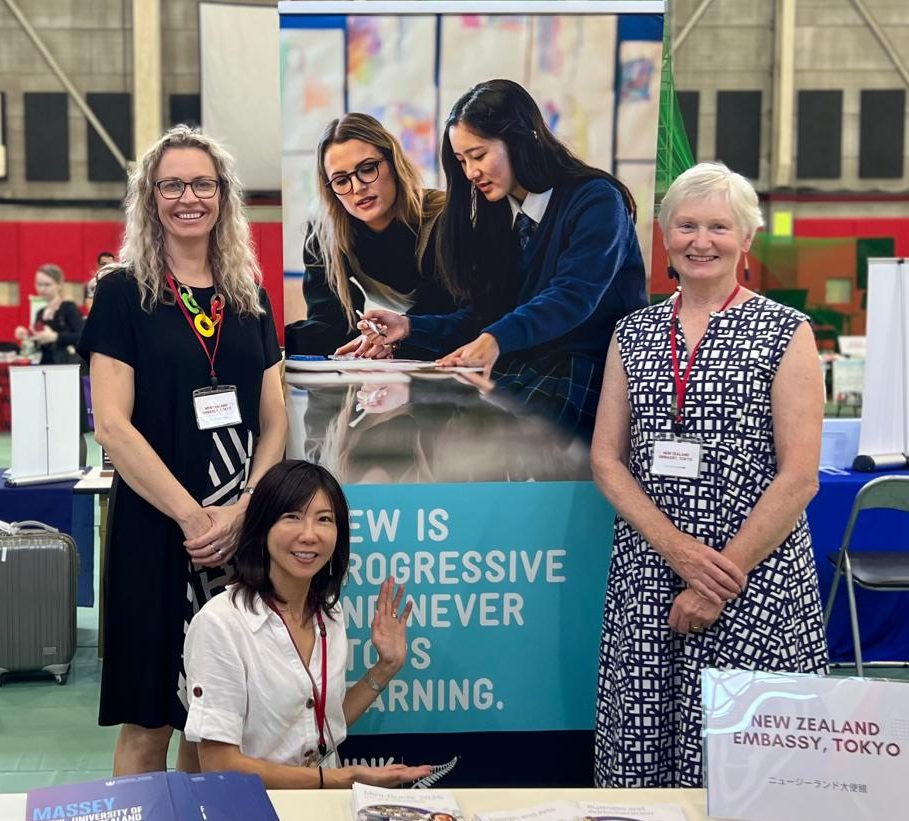
News
International engagements lead to enrolments
Japanese education providers and students are booking Whanganui visits following successful international education engagements with local secondary schools.
Japan, South Korea and Vietnam feature on the itinerary of a local delegation set to re-establish Whanganui’s international student connections.
International students make a significant contribution to Whanganui’s economy and welcoming these students enriches the schooling experience of local students, improving cultural understanding and opportunities for both groups.
The delegation is being made possible through support from economic development agency Whanganui & Partners. Rach Hoskin, the agency’s Strategic Lead for Capability, has led efforts to send the delegation abroad.
“We know our schools and community missed hosting international students over the pandemic period and it’s been a priority of ours to reestablish Whanganui’s reputation as a welcoming, safe and fun place to study,” she said.
The delegation of four is made up of Natasha McKee and Jane Williams, Directors of International Students from Whanganui High School and Whanganui Girls’ College respectively, Jude Lydia, a former International Secondary School Director who is responsible for facilitating the appointments in Asia, and Rebecca Black, Strategic Lead for Marketing at Whanganui & Partners. The directors will also be sharing information on behalf of Cullinane College.
Hoskin said in 2022, the three schools combined hosted 7.5 full-time equivalent students (the .5 reflects a study period of half a year). In 2019, that figure was 100.5.
Whanganui & Partners tracked the international student contribution to the economy up to 2019, when the Covid pandemic drastically impacted student numbers. The 2019 data showed international secondary school students each added an average of $39,290 yearly to Whanganui’s economy. Including tertiary students, the average was $44,951.
“During Covid, agents throughout Asia had to change career paths as the international student market came to a standstill. So the task is now to reestablish and create new connections. It’s been a shame to lose those firm contacts we had but there’s also great opportunity for us to refresh each region’s understanding of Whanganui and what we have to offer,” Hoskin said.
Hoskin said the delegation had clear goals in place related to the trip. The three schools combined aimed to add 16 international students in the 2024-25 period as a direct result of this trip. Attracting this number of students would boost the local economy by more than $630k over the two-year period, Hoskin said.
“That’s our most conservative estimate though. We know this trip will establish a connection which will continue to benefit these schools and our wider community for years to come. This is just the beginning, we want to get back to and exceed those 2019 student numbers.”
The group will spend the first leg of the trip focused on Japan where they will visit schools, study exhibitions and student agents in Tokyo and Osaka. Next, they will travel to Korea and again meet with international study representatives and schools in Seoul. Lastly, they will travel to Vietnam to connect with agents and speak to parents and students in Hanoi and Ho Chi Minh City.
Japan and Korea are New Zealand’s biggest international student markets, following China. Hoskin said the Vietnam market was less established but offered an opportunity for Whanganui to make new connections.
Hoskin has also recently hosted a group from Toyko’s Board of Education and the success of that trip has enabled a larger group to confirm plans to travel to Whanganui in late October. The group, which has a focus on agricultural study, has aspirations to set up a sister-school arrangement.
The Whanganui delegation will meet with the Tokyo Board of Education while in Japan. In Seoul, which like Whanganui has UNESCO City of Design status, Black will attend a meeting with Seoul’s Global Relations Team to discuss City of Design initiatives and establish a direct connection between the cities.
Black said international students made a significant impact on Whanganui’s economic growth and being able to meet with teachers, parents, students and agents face-to-face was the most effective way to ignite interest in studying Whanganui and establish lasting connections in Asia.
“In obvious ways, students contribute in the form of fees to local schools and tertiary providers but they also enable employment growth through the infrastructure that forms to support their stay. So tutors, cleaners, food service providers, maintenance people, and others gain contracts because of their time here,” Black said.
“And of course, the students explore, shop and socialise while they are studying in Whanganui. Many have their families visit and they are also great ambassadors for Whanganui – while they are hosted here but also when they return home and share their experiences.”
Black, who spent one year in Korea and five in Japan teaching English, said Whanganui’s strengths stood out in the international student market.
“We have an attractive, compact and easy-to-navigate city. This is a beautiful region and our schools welcome and value these visiting students, they take good care of them while they are here. Our lifestyle is a great drawcard and we hit that perfect balance of appealing to students’ sense of adventure and discovery while also reassuring their parents that they are safe, cared for and engaged in learning.”
Black said the students make a positive impact on our economy and an important contribution to our city’s cultural wealth.
“Having local and international students learn alongside each other builds cross-cultural skills and provides an opportunity for our rangatahi to engage with the international community. These connections enhance Whanganui’s reputation as a great place to learn, visit and live.”
The group leaves Whanganui on September 30 and returns on October 17.



Register to gain access to the Discover Whanganui resource hub.